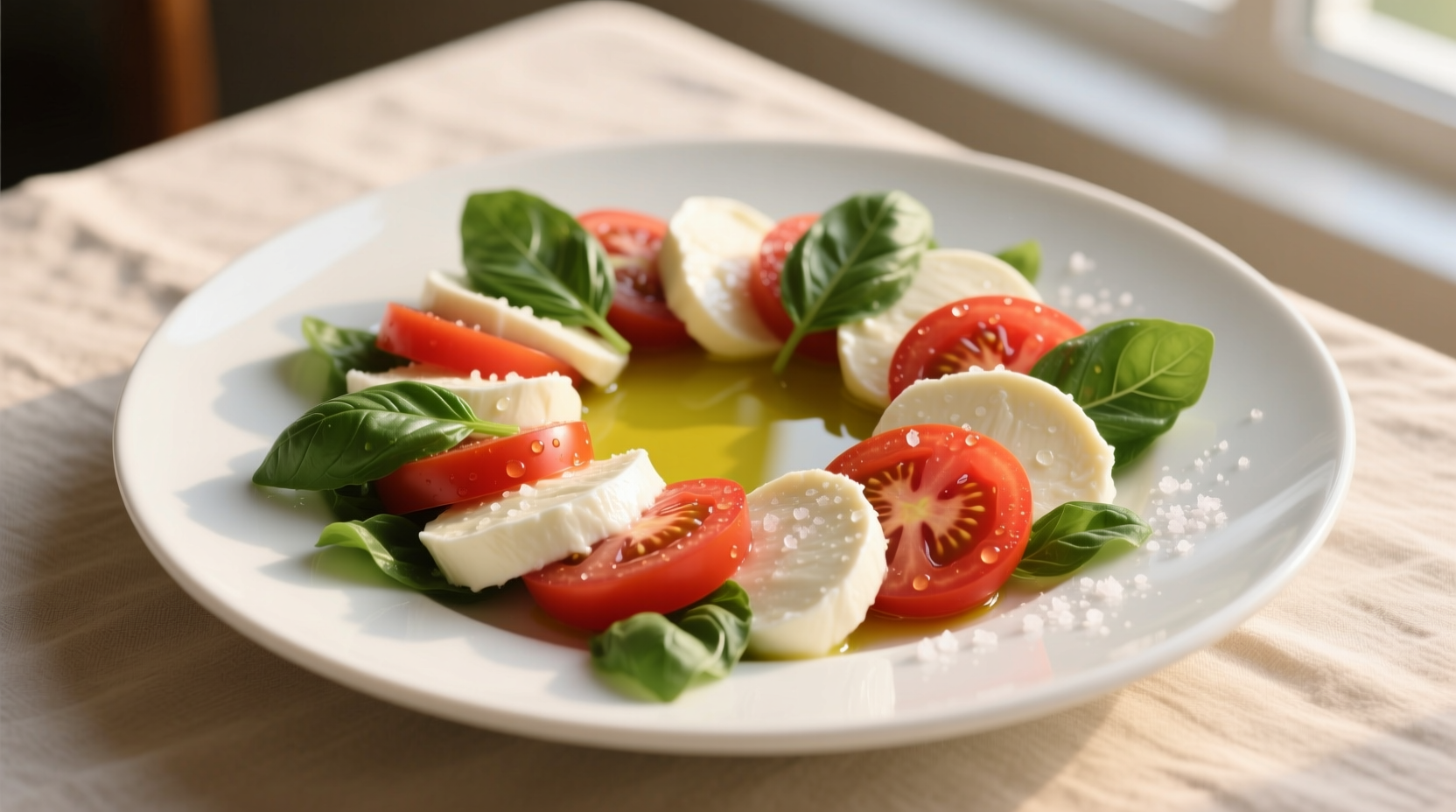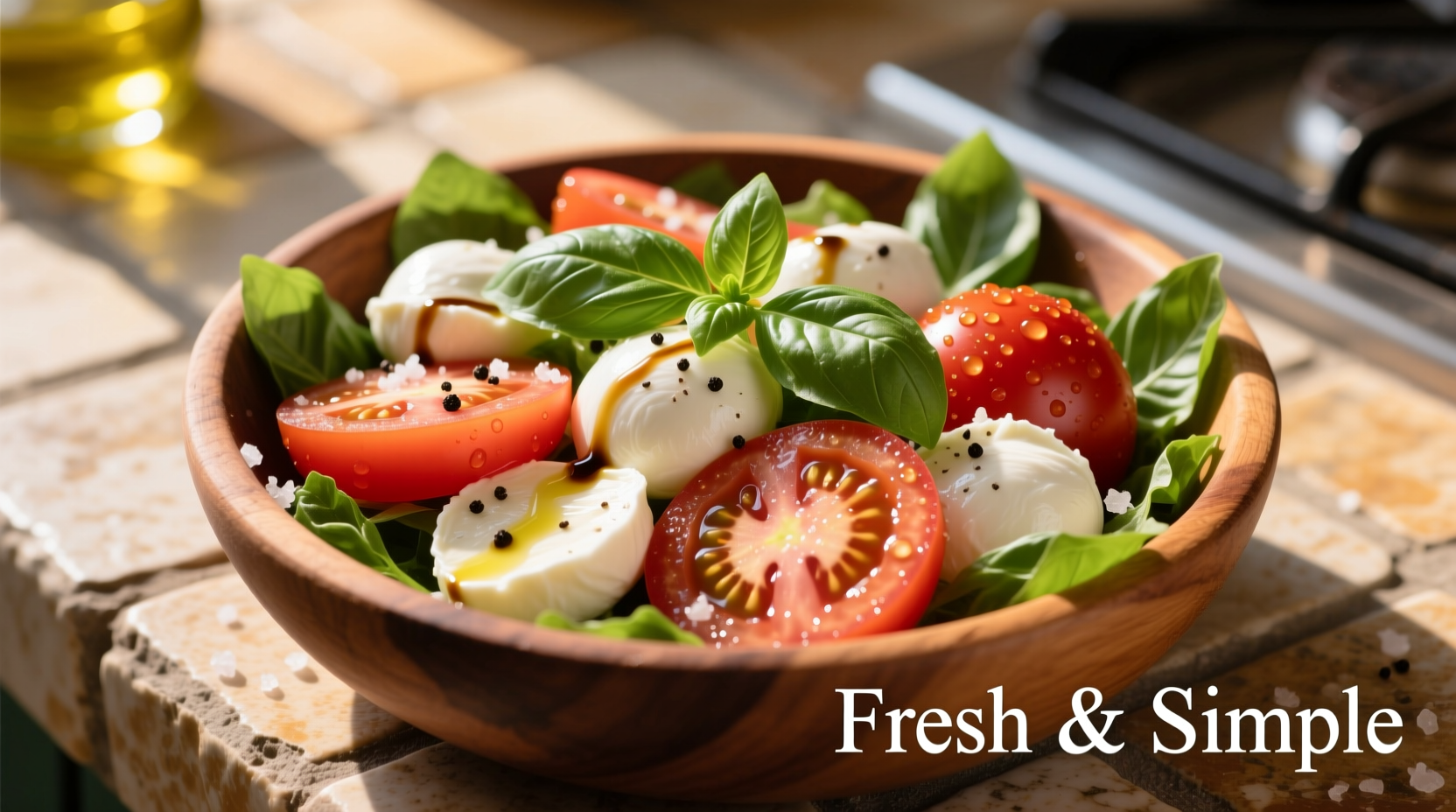The perfect tomato and basil mozzarella salad—also known as Caprese salad—requires just three fresh ingredients: ripe tomatoes, creamy mozzarella di bufala, and fragrant basil, drizzled with high-quality olive oil and a pinch of sea salt. This classic Italian dish takes only 15 minutes to prepare and delivers maximum flavor when using peak-season ingredients.
Nothing captures the essence of summer quite like a perfectly crafted tomato and basil mozzarella salad. As a culinary staple originating from Italy's Campania region, this deceptively simple dish has become a global favorite for good reason—it showcases how minimal ingredients, when chosen with care, create extraordinary flavor. Whether you're preparing a quick weeknight dinner or an elegant starter for guests, mastering this recipe elevates your cooking repertoire with minimal effort.
The Essential Components: Quality Matters Most
Unlike complex recipes that rely on multiple ingredients to mask imperfections, the beauty of tomato and basil mozzarella salad lies in its purity. Each component must shine:
| Ingredient | Quality Indicator | Recommended Source |
|---|---|---|
| Tomatoes | Vibrant color, slight give when gently squeezed | Local farmers' market (July-September) |
| Mozzarella | Labeled "di bufala" with milky aroma | Specialty cheese shop or Italian market |
| Basil | Deep green, crisp leaves without dark spots | Homegrown or farmers' market |
According to the USDA Nutrient Data Laboratory, ripe tomatoes contain 20 different carotenoids that develop fully only when vine-ripened, explaining why supermarket tomatoes often lack the complex flavor of locally grown varieties. This scientific insight underscores why ingredient quality directly impacts your tomato and fresh mozzarella salad experience.
Step-by-Step Preparation: The 15-Minute Method
Follow this chef-approved sequence for optimal results:
- Prepare ingredients separately—never mix until serving to prevent sogginess
- Slice tomatoes ¼-inch thick, alternating between red and yellow varieties if available
- Drain mozzarella thoroughly and slice to match tomato thickness
- Arrange alternately on a platter, slightly overlapping for visual appeal
- Add whole basil leaves—never chopped, to preserve essential oils
- Season just before serving with flaky sea salt and freshly cracked pepper
- Drizzle with olive oil (never vinegar) using extra virgin oil with fruitiness

Avoid These Common Mistakes
Even experienced cooks make these errors with their tomato and mozzarella salad with basil:
- Refrigerating ingredients—cold dulls flavors; keep all components at room temperature
- Using pre-sliced mozzarella—excess water dilutes flavor; slice your own from a ball
- Adding dressing too early—salt draws out tomato liquid, creating a watery mess
- Chopping basil—bruising releases bitter compounds; use whole leaves
The FDA Food Code recommends keeping fresh produce at proper temperatures to maintain quality and safety. Room temperature storage for tomatoes preserves their texture and flavor compounds that degrade below 50°F (10°C).
Creative Variations for Every Occasion
While purists argue against modifications, these thoughtful enhancements work for specific contexts:
- Summer entertaining: Add edible flowers and balsamic reduction dots
- Protein boost: Layer with grilled chicken or shrimp for a complete meal
- Chef's variation: Substitute burrata for mozzarella for extra creaminess
- Herb twist: Add a few fresh oregano leaves for Mediterranean depth
Serving and Pairing Recommendations
This versatile dish works as:
- Appetizer: Serve with crusty bread to soak up flavorful juices
- Main course: Pair with grilled fish or chicken for a light summer meal
- Side dish: Complements pasta dishes without competing flavors
For wine pairings, choose a light Italian white like Vermentino or a dry rosé that won't overpower the delicate flavors. The ideal serving temperature for tomato and fresh mozzarella salad is between 68-72°F (20-22°C), when all flavor compounds are most expressive.
Storage and Freshness Guidelines
This salad is best enjoyed immediately, but if necessary:
- Store components separately in airtight containers
- Tomatoes last 2 days at room temperature
- Mozzarella keeps 3 days in brine solution
- Basil stays fresh 5 days wrapped in damp paper towel
- Never store assembled salad—it becomes watery within 30 minutes
Food safety experts at Centers for Disease Control and Prevention emphasize that fresh produce should be washed thoroughly before preparation, but never stored while wet, as moisture accelerates spoilage and potential bacterial growth.
Historical Context: More Than Just a Salad
Contrary to popular belief, the tomato and mozzarella salad with basil isn't ancient Italian tradition. Its documented history reveals:
- 1920s: Mozzarella production becomes commercially viable in Campania
- 1950s: First printed recipe appears in Italian cooking magazines
- 1980s: Gains international popularity during Italy's culinary renaissance
- Present: Recognized as part of Italy's cultural heritage by Slow Food Movement
This timeline, verified through the Slow Food Foundation's historical archives, shows how regional specialties evolve into global phenomena when they capture something essential about seasonal eating.











 浙公网安备
33010002000092号
浙公网安备
33010002000092号 浙B2-20120091-4
浙B2-20120091-4